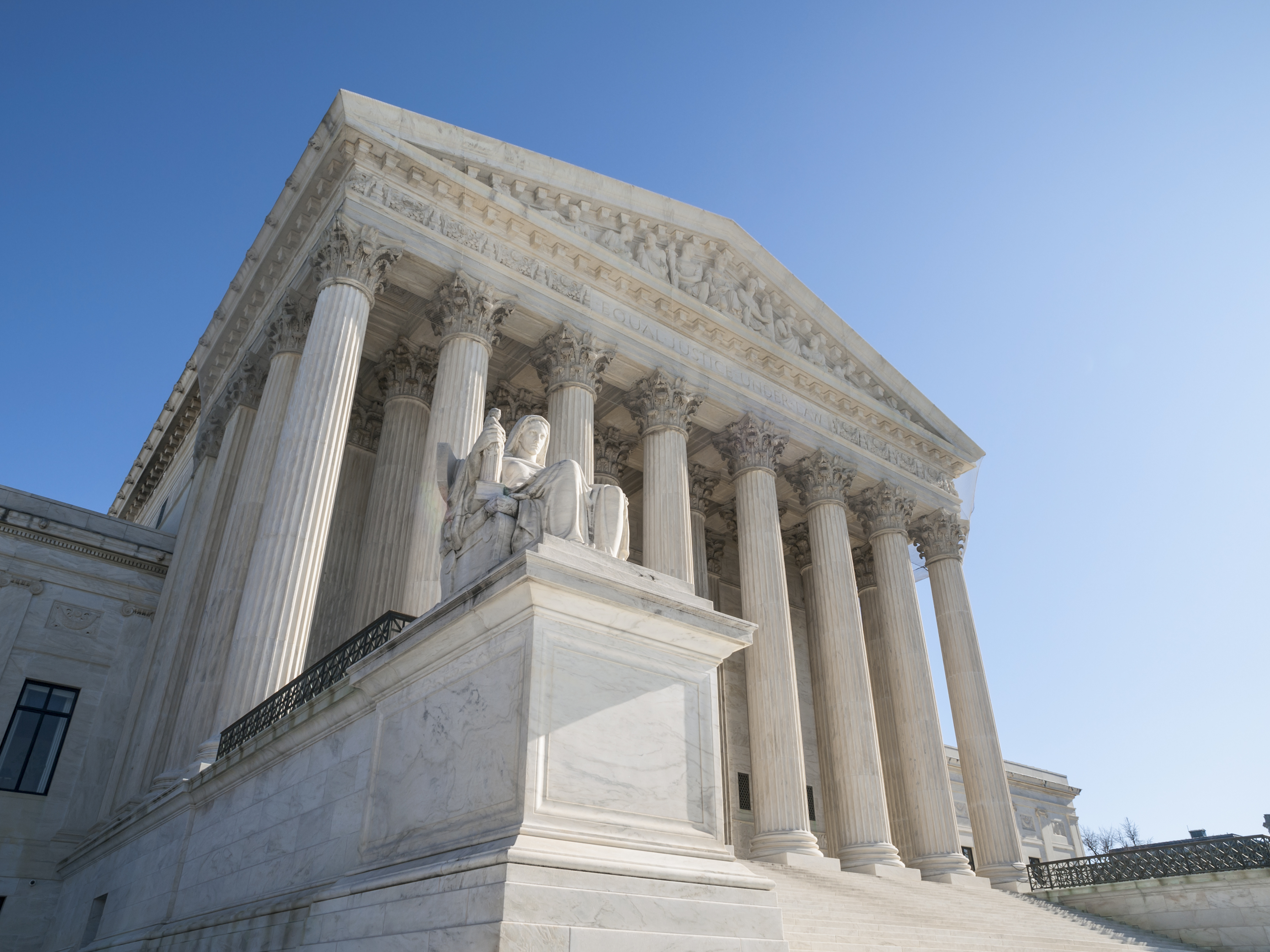
The North Carolina map was drawn by Republicans, the Maryland districts by the state's dominant Democrats.
While the Supreme Court regularly scrutinizes electoral districts for racial gerrymandering, the justices have never found a state's redistricting map so infected with politics that it violates the Constitution. Such a decision would mark a dramatic change for how the nation's political maps are drawn.
The court passed up the chance last term to settle the issue of whether courts have a role in policing partisan gerrymandering, sending back on technical rulings challenges to a Republican-drawn plan in Wisconsin and the challenged Maryland map.
In oral arguments last term, conservative justices generally seemed uncomfortable with judges getting involved in what some consider a political matter between voters and their representatives. Liberal justices seemed to think that partisan redistricting was thwarting the will of voters and that the situation will get worse as technology provides lawmakers with pinpoint accuracy in identifying which party voters support.
But a reconfigured court will consider the issue in March. Justice Anthony Kennedy, who had held out the belief that some gerrymandering could be so political as to be unconstitutional, has been replaced with Justice Brett Kavanaugh. The new justice is generally more conservative but has not ruled on the issue in the past.
The Supreme Court had little choice but to accept the cases, as it is required to either affirm or reverse lower-court decisions on such political matters.
While last term's outcomes did not favor them, opponents of partisan gerrymandering said they hoped the Supreme Court could be persuaded to find a role for the judiciary in the matter.
"Voters nationwide are ready for a ruling from the Supreme Court that finally declares that they come first, not self-interested politicians," said Paul Smith, vice president of the Campaign Legal Center.
Adam Kincaid, executive director of the National Republican Redistricting Trust, said that "maps that follow traditional redistricting criteria should be free from challenges in federal court."
In June, the justices said the Maryland case was not ready for them and sent it back. In November, a unanimous three-judge panel found that Democrats had unconstitutionally targeted Republican voters in the 6th Congressional District because of their political affiliation. The legislature had redrawn the district, which previously stretched across the top of the state, to dip down into Democratic strongholds in the Washington suburbs.
After the 2011 redistricting, a Democrat won the seat previously held by a Republican. There was an open election in the district in November, when Democrat David Trone defeated Republican Amie Hoeber by a wide margin.
"The massive and unnecessary reshuffling of the Sixth District, involving one-half of its population and dictated by party affiliation and voting history, had no other cause than the intended actions of the controlling Democratic officials to burden Republican voters by converting the district" into a Democratic one wrote Judge Paul Niemeyer of the U.S. Court of Appeals for the 4th Circuit. He was joined by U.S. District Judge George Russell III.
Chief U.S. District Judge James Bredar wrote a separate opinion agreeing with the overall judgment and declaring partisan gerrymandering "a cancer on our democracy."
Rather than redraw the map, as the federal judges had ordered, Democratic Attorney General Brian Frosh decided to appeal to the Supreme Court. That put him at odds with the state's Republican Gov. Larry Hogan, who also won reelection in November and has pushed three times for a constitutional amendment that would have an independent commission redraw boundaries.
"It's outrageous that the attorney general and legislative leaders are continuing to fight against free and fair elections, even in the wake of a unanimous federal court ruling," said Hogan spokeswoman Amelia Chasse.
The Supreme Court had also sent back the North Carolina case last term, telling a special panel of three federal judges to decide whether challengers in that state had the legal standing to bring the challenge. The judges said they did, and also found that the legislature's efforts violated constitutional protections of equal protection and free speech.
The North Carolina legislature "drew a plan designed to subordinate the interests of non-Republican voters not because they believe doing so advances any democratic, constitutional, or public interest, but because, as the chief legislative mapdrawer openly acknowledged, the General Assembly's Republican majority 'think[s] electing Republicans is better than electing Democrats,' " wrote Judge James Wynn Jr. of the U.S. Court of Appeals for the 4th Circuit.
"But that is not a choice the Constitution allows legislative mapdrawers to make."
Wynn was referring to comments from a legislative leader after a previous map was struck down as an example of racial gerrymandering that made clear politics was at the heart of the new map.
"I think electing Republicans is better than electing Democrats," said Rep. David Lewis, a Republican member of the North Carolina General Assembly, addressing fellow legislators when they passed the plan in 2016. "So I drew this map to help foster what I think is better for the country."
He added: "I propose that we draw the maps to give a partisan advantage to 10 Republicans and three Democrats because I do not believe it's possible to draw a map with 11 Republicans and two Democrats."
When voters went to the polls that fall, the 10-3 outcome was exactly as Lewis had predicted, even though Republican candidates won just 53 percent of the statewide vote. The trend continued in November's elections, although one of those district results is being challenged because of allegations of ballot fraud.
The three-judge panel in its August decision had considered ordering new congressional districts for the 2018 elections. But even challengers agreed there would not be enough time to draw new maps, and the panel put its ruling on hold to await Supreme Court review.
(COMMENT, BELOW)


 Contact The Editor
Contact The Editor
 Articles By This Author
Articles By This Author